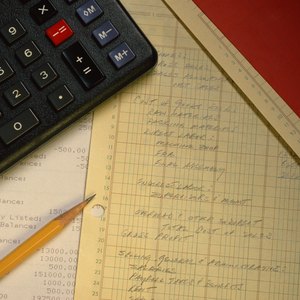
Your bank statements provide a record of all your banking transactions. They are listed in order of how money entered or exited your account, with the most recent transactions showing up at the top of the summary. These transactions do not list in the order in which they occurred for you. This is an important distinction, because not all transactions process at the same speed. It´s also the reason you need to keep your account balanced at all times and reconcile it frequently.
Look at the account overview. This information includes the current balance at the time the statement was generated, including the total amounts of all deposits and withdrawals during the month.
Examine all transaction details. These details show up as a long list, which can be extensive. Often one transaction can have multiple entries. For instance, a single ATM withdrawal while on vacation in a foreign country may have one item showing the amount of the withdrawal, another item showing the ATM withdrawal fee, an item for currency conversion fees and, finally, a balance inquiry fee. This amounts to four transaction details but only one transaction.
Verify all entries and explanations. Most commonly banks will list check numbers, vendor names and brief descriptions of transactions on both written and online statements. However, there are times when you might encounter little more than a coded entry. If you are banking online, position your cursor over the transaction description to see if there are any active links to explanations. If you find this on a written statement, contact your bank customer service representative for a detailed description of the transaction.
Tally your daily amounts. To keep the most accurate accounting of your checking account or credit card activities, review your daily balance summary. It should match your checkbook and receipt totals in a general sense. Additionally, recurring transactions such as fixed-scheduled automatic payments should generally match up; any double billings will be apparent.
Secure your bank account information. It´s important to keep your bank account transaction records for at least the current tax year, but you also need to make sure they stay secured. Store them in your locked files along with your other sensitive information and important documents.
References
